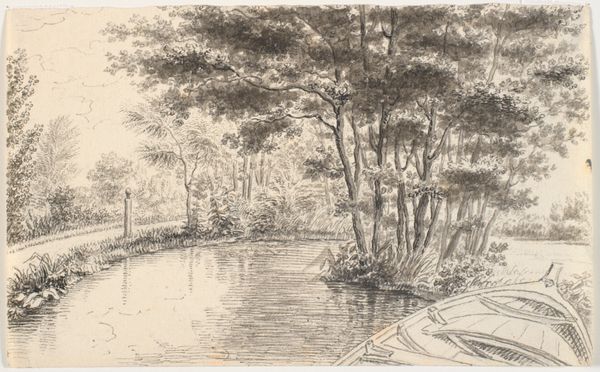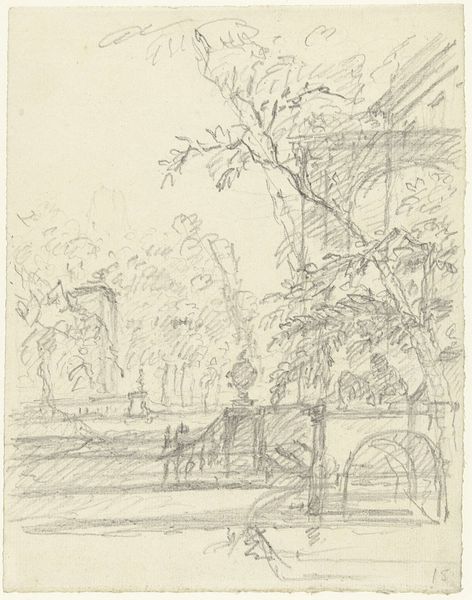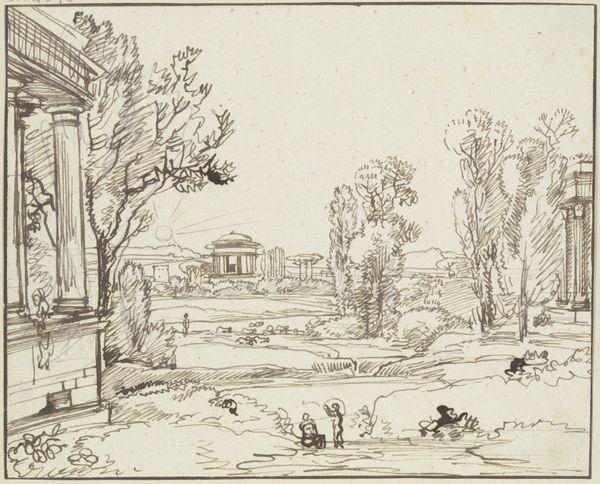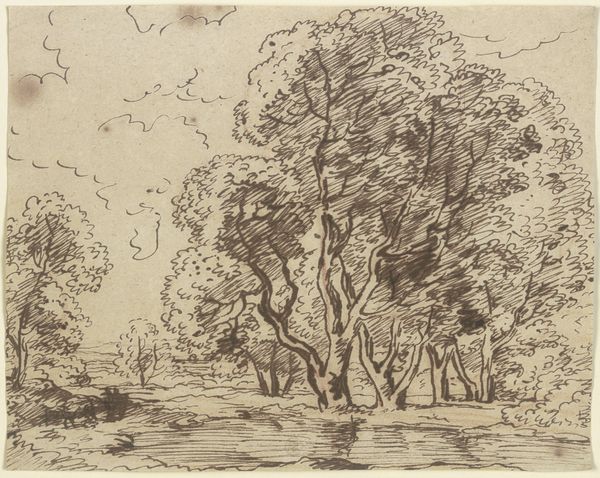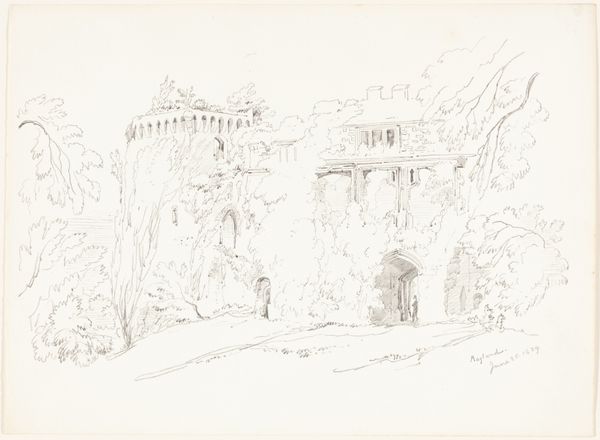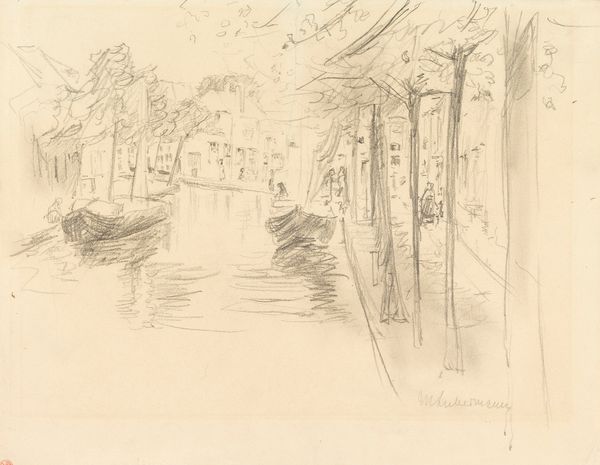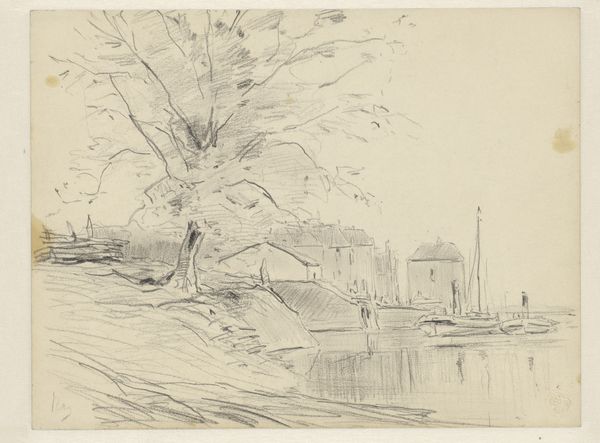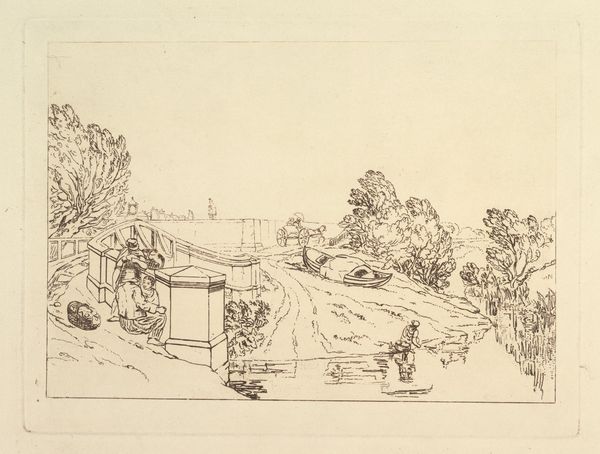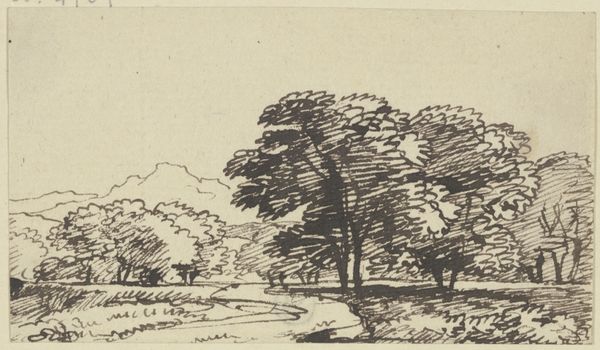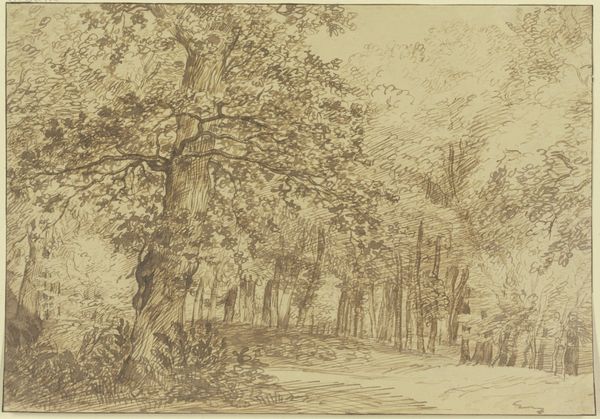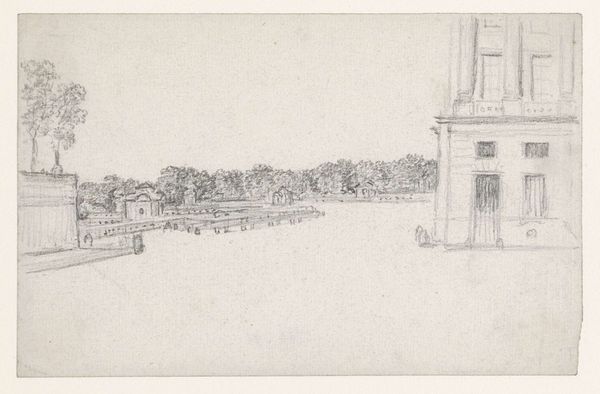
drawing, etching, ink
#
drawing
#
ink drawing
#
etching
#
pencil sketch
#
landscape
#
etching
#
ink
#
line
#
cityscape
Copyright: National Gallery of Art: CC0 1.0
Curator: This etching, “Isleworth,” is possibly from 1819 and is the work of J.M.W. Turner, created using ink. Editor: It’s stunning how he conveys such stillness with these thin lines. I see a tranquility but almost a sense of melancholy. What sort of narrative do you think he was aiming to capture here? Curator: Turner was likely sketching landscapes for his *Picturesque Views on the Southern Coast of England*. Think about it – he was at the forefront of experimenting with industrial materials. Ink, paper, and printmaking allowed him to reach a wide audience. It democratized art consumption. Editor: It’s so fascinating to consider the work’s accessibility in its time. The river becomes this reflective mirror, showcasing not just the literal landscape, but also the subtle power dynamics woven into landscape art itself. Curator: Yes, landscape became so important in establishing identity, power, and social standing during the period. And consider how the rapid rise of printmaking coincided with societal shifts; the printing press really influenced production processes, commerce, and labour. The commodification of art. Editor: Exactly. We often view these pastoral scenes through a romantic lens, forgetting how the very land was a site of labor, class division, and ecological change. How did this landscape play into broader issues like urbanization or even colonization? The Thames river for instance, enabled trade for exploitation and colonial power. Curator: Absolutely. Turner’s involvement with the printmaking and publishing process is often forgotten, and deserves our attention. Editor: His skill in this craft offers ways of looking at this composition within social contexts that can lead to further questioning of aesthetic norms in art history. Curator: Precisely. Understanding the labour and availability is key to a deep reading. Editor: These contextual elements make this artwork so much more layered, really urging us to connect it to the broader societal narrative in our contemporary moment.
Comments
No comments
Be the first to comment and join the conversation on the ultimate creative platform.
